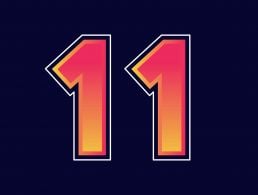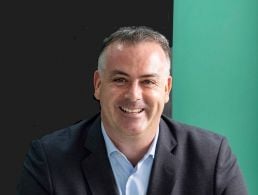From sound-reducing paint to tackling the world’s hardest sum, learn about the adventures of some of the past BTYSTE champions.
2020 marks the 20th year that BT Ireland has sponsored the Young Scientist & Technology Exhibition (BTYSTE) and, to mark the occasion, Siliconrepublic.com has taken a look at the journeys of some of its most successful alumni.
Between the diverse career paths they’ve taken and the skills they’ve picked up along the way, we were eager to find out what lasting impacts engaging with science beyond the confines of the classroom can have.
Tony Scott, founder of the annual exhibition, said: “We have countless testimonials from our alumni who credit the exhibition with setting them on a pathway to courses and careers they never thought they would have done prior to entering.
“That’s the magic of the BTYSTE experience – it opens the eyes and minds of all who visit.”
‘A wake-up call’
This is certainly true for Peter Taylor, who went from being totally unaware of his talent for maths in a DEIS school, to working on “the oldest and reputedly most difficult written exam in the world” at Cambridge University.
Taylor describes having entered the BTSYE competition “fairly blind”, but his team’s geometry-based project won three of that year’s top awards.
“It was a bit of a revelation for me that I was even good at science,” he said. “It was a real wake-up. If our teacher hadn’t actually mentioned this thing or hadn’t pushed me to enter it, I never would’ve done it.
“It turned out to be a massive investment in my life.”
Taylor went on to study maths in UCD, before graduating in the top percentile of his class at Cambridge, returning to UCD for a PhD in black hole physics, and undertaking a research fellowship at Cornell University in New York.
Today, Taylor’s based in Dublin City University, where he researches and teaches on the subject of the physics of black holes.
“I’m just fascinated by the field, you know. I don’t feel like I work a day in my life,” he said.
From a love of music to treating tinnitus
At just 26 years of age, Rhona Togher is the CEO and co-founder of Restored Hearing, a company that has developed a sound therapy for tinnitus.
Her BTYSTE journey followed a very different route to Taylor’s, with her love of music evolving into a passion for the physics of sound. She then rooted her career in industry rather than academia, starting a company with her BTYSTE teammate Eimear O’Carroll.
“We commercialised the product devised in our final project and turned it into a business that we run together more than 10 years later,” Togher said.
“We turned our project into our careers and that started with studying physics at university, which neither I nor Eimear were planning to do before our involvement with the competition.”
New perspectives
For engineering student Heather Murphy, her BTYSTE project on sound-reducing paint showed her a side of STEM that often isn’t too apparent.
“It kind of opened me up to a different side of STEM where it’s not just all science and men in white lab coats, and it’s not all just coders in a dark basement working away on computers,” she explained.
Like Togher, Murphy was especially taken with the commercial aspect of science and technology.
She was one of 30 students to attend a BTYSTE business bootcamp, which supported her mission to develop the paint into a product for potential buyers such as cinema theatres.
Soft skills
Beyond the ways that getting involved in scientific discovery at a young age helped shape their careers, all three also gained some more transferable soft skills by becoming embedded in the science exhibition culture.
Confidence boosts and the capacity to get creative with science were among them, but Togher gave insights into some others, describing the competition as “a great way to meet like-minded teens”.
For Taylor, the communication skills he developed still serve him today as he gets the chance to “train up the next generation of teachers”.
“One of the strongest areas in which I developed as a result of the exhibition was communicating through it,” he added. “We were getting constant feedback, thus we were communicating these technical results really well.”
Meanwhile, Murphy found that the immersion in project work prepared her for teamwork and collaboration both at college and during her internship at a software company. She also became familiar with the importance of driving self-learning.
“When you’re looking for a job, employers really seek that sort of thing,” she said.
BTYSTE and diversity
BTYSTE bases its mission on sparking an interest among young people in STEM, and it tries to ignite greater opportunities for girls and women along the way.
Managing director of BT Ireland, Shay Walsh, said: “It’s up to us and other leading organisations to show students the potential that a career in STEM can offer.
“We also buck the trend of STEM being a more male-dominated area, as we have had a higher quota of girls entering over boys for the last decade.
“Despite this, however, many girls are continuing to drop these subjects at third-level and we, as employers, have a role to play in encouraging more women to consider careers in STEM-related fields.”
Words of advice
We asked each of the three alumni to give us some short but sweet words of advice, given the fascinating encounters they’ve had within the world of STEM.
Togher wanted anyone thinking of a career in science or technology to avoid limiting themselves to purely one field or the other.
“Most modern jobs have an aspect of technology to them,” she said. “There are so many wonderful opportunities out there, so I’d encourage exploration.”
As for Taylor, his interest in all things future of work dictated his words of wisdom.
“I mean, 10 years ago there was no such thing as an autonomous car engineer, and it’s going to be the very same for these students,” he said.
“Some of them will be doing jobs that just simply don’t exist yet, because the technology doesn’t even exist. That’s massively exciting to me.”
And for anyone wondering whether or not they should pursue a science-related career, Murphy recommended maintaining curiosity and trying things out for size.
“Anything really that you give a shot is always worthwhile,” she said. “You’re always going to learn something.”




